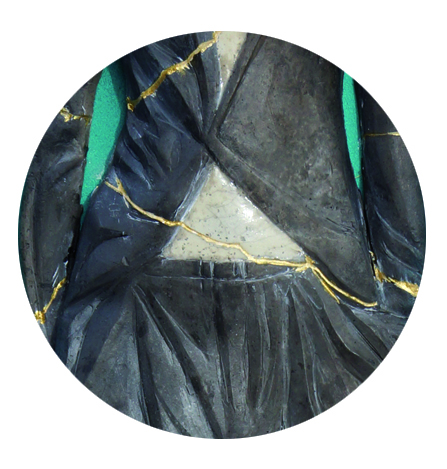Kintsugi, a celebration of imperfection
Kintsugi, or golden joinery, related toa late 15th century Japanese technique used to repair broken porcelain, consists of mending the break with lacquer and powdered gold. Kintsugi enjoys a central association with the Japanese tea ceremony.
The kintsugi technique illustrates a philosophy embracing an object’s past, its history and whatever fate may have inflicted on it. A broken ceramic piece has not reached its end, but rather encounters the beginning of a new cycle, extending its role. Therefore, no effort is made to mask repairs, but rather to highlight them as expressions of an individual trajectory. The shards of a broken piece are collected, cleaned and glued with natural lacquer and then the “scars” are sprinkled with gold dust.


In this sense, kintsugi belongs to the Japanese philosophy of wabi sabi, a celebration of imperfection. This Asian philosophy, combined with Zen concepts, elevates acceptance and contemplation of imperfection and change. These values, resonating in a contemporary context, incorporate two fundamentals: wabi, referring to the fullness and modesty inspired by nature and sabi, respect for the work of humanity and its history.
An artful repair transforms the piece into an expression of transcendence.
By applying this philosophy to one self, kintsugi acts as a form of “arttherapy” divulging injuries as milestones, encouraging their acceptance and eventually liberating them.
